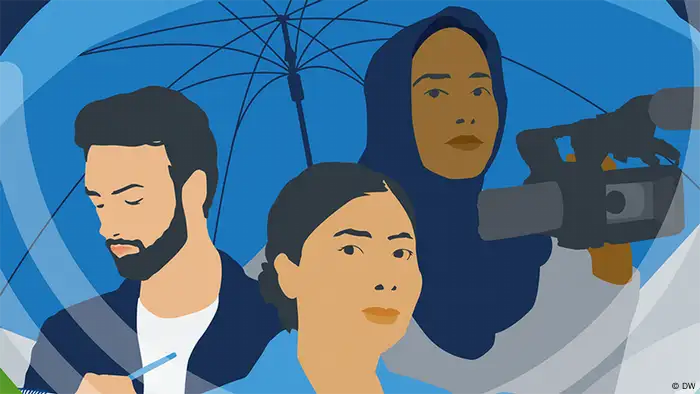media safety
You want viability? You need a culture of safety!
In a time of journalistic peril, news organizations and journalists must protect themselves, their profession and their vital role in global society. By Elisabet Cantenys
Over the last several years, killings, imprisonments and abductions of journalists have reached historic highs. These attacks represent a fundamental threat not just to individual news professionals, but to the practice of independent journalism and, ultimately, media viability. In a time of journalistic peril, news organizations and journalists must create a culture of safety—to protect themselves, their profession and their vital role in global society.
Armed men attack the offices of a newspaper building, a news website is hacked, a photojournalist gets beaten by police, a news manager shot. The Mexican newspaper Noroeste has seen it all. Unfortunately, Noroeste’s experience is not unique. Too many journalists live in fear, not only in Mexico. I’ve listened to their horror stories in many parts of the world—in their homes in remote villages, in newsrooms, workshops, meetings, and at conferences. I have visited injured journalists in hospitals and have spoken with far too many widows and families of imprisoned journalists. Does it need to be like this? What can we do to change it? We need to create a culture of safety.
Journalism ecosystems are crying out for deep systemic change in the way we approach safety issues, and ultimately, media viability. Most news organizations and initiatives are unprepared and exposed to threats, and new safety challenges have exposed them to this reality, more so recently due to COVID-19.
Safety is a prerequisite for independent and professional journalism and has a direct effect on media viability. Media viability refers here to the ability to be successful in all areas—in terms of journalistic content as well as the financial side of the business. How can a news organization succeed without addressing the threats that challenge its very existence?
Solid safety is built upon a holistic approach
There is a danger that safety and security end up reduced to physical safety. That’s a very tangible and obvious dimension. However, the reality is more complex. A solid safety policy is built upon a holistic approach and incorporates digital, psycho-social, gender, and identity factors as well as ethical aspects. These are all interlinked and need to be addressed in sync if we expect safety and security measures to be effective. Narrowing safety to just one of these aspects will diminish our chance of success. We must acknowledge that news organizations’ safety policies may not sway a drug cartel, a draconian media law, organized crime or a corrupt administration; but we know that these policies can be very effective in protecting the lives of journalists, and ultimately, independent journalism as a whole.
Aside from the moral imperative to protect all the individuals who contribute to a news product, investing in a robust safety policy can save a news organization from the financial loss and reputational damage of a crisis that could have been prevented and avoided, or could have been carefully managed. Safety protocols and policies are at the heart of a culture of safety. These are aimed at protecting all assets, and ultimately guarantee the existence of a news initiative.
The Mexican publication Noroeste is a good example. The newspaper has put in place their own safety protocols and thanks to these, the paper has learned to avoid and overcome all kinds of attacks. This includes clear check-in procedures for reporters covering challenging assignments—arguably one of the most simple, efficient and low-cost safety measures to put in place. They have also formed alliances with other news outlets to set publishing schedules to protect their reporters and editors on the ground. Moreover, they have established mechanisms to monitor threats after publication. They also adhere to rigorous professionalism and ethical standards, understanding how these are also safety aspects.
It’s difficult to imagine how Noroeste would be able to perform and hold on to their independent reporting and investigations without preemptive safety measures and effective crisis management.
Crisis management protocols go hand in hand with protective safety measures. While safety policies and protocols have a preemptive approach, a crisis management protocol provides clear guidelines on how to react in the case of an emergency. It focuses on roles and responsibilities as well as actions to be taken with the aim of responding in the most efficient way when a crisis occurs. A good crisis management protocol will help a news organization to navigate a crisis adequately, minimizing negative consequences. Moreover, efficient safety and crisis management protocols have a positive effect on the mental well-being of everyone working for a news organization. They feel valued, protected and professional, which improves productivity and the reputation of the news organization as a whole.
Safety is a prerequisite for independent and professional journalism and has a direct effect on media viability.
The costs of safety protocols
How much are safety protocols going to cost? Less than the price of not having these protocols in place. To put it quite simply: news initiatives cannot afford to ignore the safety aspects of the job. Doing so would challenge their viability and limit their capacity to deliver and fulfill their role in society.
An example: a journalist gets arrested on false charges. Without a crisis protocol, this could easily turn into a long and expensive nightmare, and is often an effective way to kill a story. Being prepared will give those involved a better chance to overcome a challenging situation. Even more, a good safety protocol could prevent or mitigate catastrophic consequences.
The good news is that safety can easily be included in the work processes of the editorial team and doesn’t need to involve expensive dedicated risk teams. Clearly, safety standards come at a cost, for measures such as insurance, safety training, and specialized equipment. However, protocols can be the most impactful and yet cost-effective element. Small and under-resourced news initiatives, in particular, can greatly benefit from these.
How to get started?
The first step is to scan the profile and nature of the news organization, including exposure to threats and tolerance for risk. It’s also important for it to understand its own capacity and resources: for the creation and implementation of preventative safety measures, and for crisis management.
News managers and editors play a crucial role here. Their awareness and willingness to find answers to these essential questions can have a profound impact and will form the basis of a safety policy. This policy should briefly describe the organization’s principles on safety and security, and roles and responsibilities within it. From there, the newsroom can create an in-house team in charge of developing safety protocols and overseeing their implementation. None of this is static—regular reviews and updates are necessary.
More work? Yes, but let’s keep in mind that good processes are enabling. How else can a journalist or a reporting team succeed when pursuing a sensitive investigative story, or covering a rally or a contested national election? How else can a reporter reach out and protect his/her sources? Safety protocols facilitate difficult tasks and decision making, providing a high return on investment. The trick here is to integrate safety best practices into content production, as quintessential journalistic questions such as ’Why are we doing this story?’ and ’Who is doing it?’ have clear safety dimensions.
The time to start is now!
When to get started? As soon as possible. Considering the fact that newsrooms require time to adopt new routines, the sooner they get started and integrate these, the better. Ideally, safety policies should be an integral part of a news organization’s initial business plan, informing strategy, identity, viability, and budget. Safety should not be an added afterthought. Many news organizations and journalists wake up to the safety call after a scare or a crisis. The point of creating and adopting safety protocols is to plan ahead, and it’s never too soon.
To whom is this relevant? Safety is key across all organizations: large and small news initiatives producing news and current affairs content, whether commercial or nonprofit, regardless of the platform. Over the last few years, we have seen an increasing number of nonprofits creating or commissioning content. Safety protocols are essential for them as well, whether they are publishers or not.
Safety means safety for everyone
It’s important not to leave anyone behind. As we see an increasing reliance on freelancers, these should not be perceived as a form of risk mitigation. News organizations should not approach working with freelancers as a way of outsourcing risks. Too often, news organizations with safety protocols in place do not factor in working with freelancers, leaving these and commissioning editors without clear guidelines and an ad hoc understanding (or no understanding at all) of their roles and responsibilities. A culture of safety does not make distinctions between staff and freelance, international or local staff—just as those who attack journalists do not care about this difference.
In 2020, the COVID-19 crisis placed safety concerns front and center for all journalists and news media, regardless of the nature and scope of their reporting. COVID-19 affected everyone, and it forced many news organizations and journalists to consider safety measures for the first time. Across the world, the pandemic highlights the existential need for independent and professional reporting, and how safety underpins both. This has created an opportunity for the journalistic community to realize how important and urgent it is to embrace a culture of safety, and to act on that realization. The sooner, the better.
The ACOS Alliance Safety Resources include the following protocols for news editors and managers:
– The COVID-19 News Organizations Safety Protocols
– News Organisations Safety Self-Assessment
Elisabet Cantenys is Executive Director of ACOS Alliance
DW recommends
Downloads
- Date 03.05.2021
- Author Elisabet Cantenys
- Feedback: Send us your feedback.
- Print Print this page
- Permalink https://p.dw.com/p/3sZsb
- Date 03.05.2021
- Author Elisabet Cantenys
- Send us your feedback.
- Print Print this page
- Permalink https://p.dw.com/p/3sZsb


